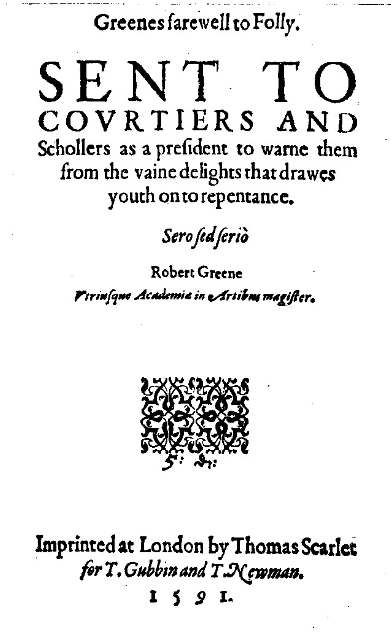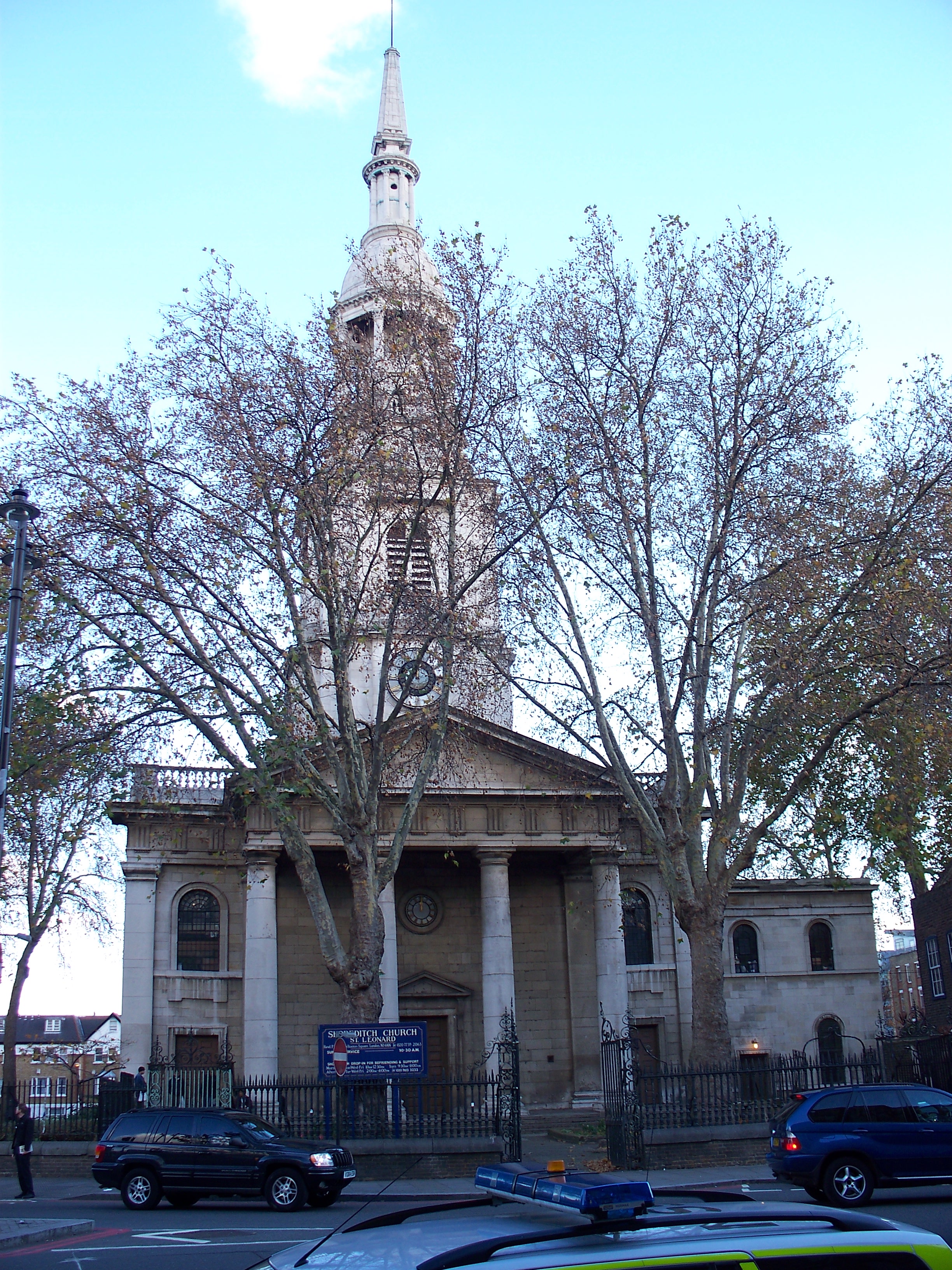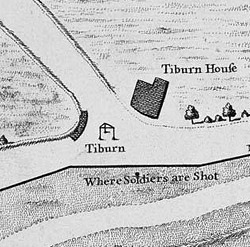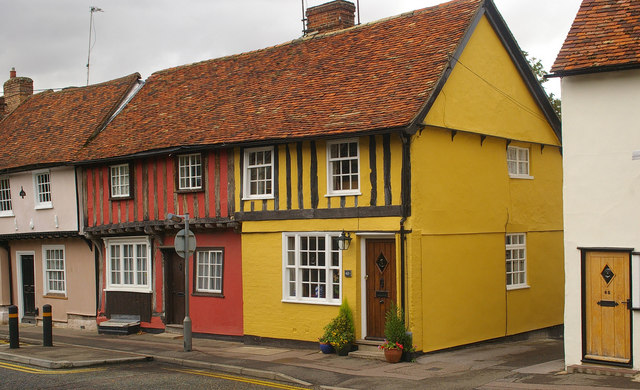|
Robert Greene (16th Century)
Robert Greene (1558–1592) was an English author popular in his day, and now best known for a posthumous pamphlet attributed to him, '' Greene's Groats-Worth of Witte, bought with a million of Repentance'', widely believed to contain an attack on William Shakespeare. Robert Greene was a popular Elizabethan dramatist and pamphleteer known for his negative critiques of his colleagues. He is said to have been born in Norwich. He attended Cambridge where he received a BA in 1580, and an M.A. in 1583 before moving to London, where he arguably became the first professional author in England. Greene was prolific and published in many genres including romances, plays and autobiography. Family According to the author Brenda Richardson, the "chief problem" in compiling a biography of Robert Greene was his name. ''Robert'' was one of the most popular given names of the era and ''Greene'' was a common surname. L. H. Newcomb suggests that Robert Greene "was probably the Robert Greene, so ... [...More Info...] [...Related Items...] OR: [Wikipedia] [Google] [Baidu] |
Woodcut
Woodcut is a relief printing technique in printmaking. An artist carves an image into the surface of a block of wood—typically with gouges—leaving the printing parts level with the surface while removing the non-printing parts. Areas that the artist cuts away carry no ink, while characters or images at surface level carry the ink to produce the print. The block is cut along the wood grain (unlike wood engraving, where the block is cut in the end-grain). The surface is covered with ink by rolling over the surface with an ink-covered roller (brayer), leaving ink upon the flat surface but not in the non-printing areas. Multiple colors can be printed by keying the paper to a frame around the woodblocks (using a different block for each color). The art of carving the woodcut can be called "xylography", but this is rarely used in English for images alone, although that and "xylographic" are used in connection with block books, which are small books containing text and images in t ... [...More Info...] [...Related Items...] OR: [Wikipedia] [Google] [Baidu] |
Richardus Tertius
'' Richardus Tertius'' is a play written in Latin about King Richard III by Thomas Legge. The play was acted by the students of St. John's College, Cambridge in 1579. It was possibly seen by two of the University Wits in Cambridge at the time: Christopher Marlowe and Robert Greene. The play was never printed in its historical era (in fact, not until 1844); but it survives in nine manuscripts, and is thought to have been well known in its time. Scholars have studied the relationships between ''Richardus Tertius'' and the later plays about Richard III, the anonymous play ''The True Tragedy of Richard III'' (printed 1594) and Shakespeare William Shakespeare ( 26 April 1564 – 23 April 1616) was an English playwright, poet and actor. He is widely regarded as the greatest writer in the English language and the world's pre-eminent dramatist. He is often called England's natio ...'s '' Richard III''. In one view, the unknown author of ''The True Tragedy'' used Legge's play oc ... [...More Info...] [...Related Items...] OR: [Wikipedia] [Google] [Baidu] |
Greene Bacon And Bungay 1594
Greene may refer to: Places United States *Greene, Indiana, an unincorporated community *Greene, Iowa, a city *Greene, Maine, a town ** Greene (CDP), Maine, in the town of Greene *Greene (town), New York **Greene (village), New York, in the town of Greene * Greene, Rhode Island, a village and census-designated place *Greene County (other), 14 counties *Greene Township, Pennsylvania (other), seven townships *Greene Mountain - see List of mountains in Virginia * Greene Island (Rhode Island) * Camp Greene, a former United States Army facility in Charlotte, North Carolina Canada * Greene Island (Lake Ontario), an island in Lake Ontario * Greene Island (Lake Huron), an island in Lake Huron People * Greene C. Bronson (1789–1863), American lawyer and politician Other uses *, a World War II destroyer *Greene Avenue (Montreal), Quebec, Canada *The Greene Town Center, also known as The Greene, a mixed-use, office, retail, dining and entertainment center in Beavercr ... [...More Info...] [...Related Items...] OR: [Wikipedia] [Google] [Baidu] |
Shoreditch
Shoreditch is a district in the East End of London in England, and forms the southern part of the London Borough of Hackney. Neighbouring parts of Tower Hamlets are also perceived as part of the area. In the 16th century, Shoreditch was an important centre of the Elizabethan Theatre, and it has been an important entertainment centre since that time. Today, it hosts many pubs, bars and nightclubs. The most commercial areas lie closest to the city of London and along the A10 Road, with the rest mostly residential. Toponymy Early spellings of the name include ''Soredich'' (c.1148), ''Soresdic'' (1183–4), ''Sordig'' (1204), ''Schoresdich'' (1220–21), and other variants. Toponymists are generally agreed that the name derives from Old English "''scoradīc''", i.e. "shore-ditch", the shore being a riverbank or prominent slope; but there is disagreement as to the identity of the "shore" in question. A suggestion made by Eilert Ekwall in 1936 that the "ditch" might have been one leadi ... [...More Info...] [...Related Items...] OR: [Wikipedia] [Google] [Baidu] |
Tyburn
Tyburn was a manor (estate) in the county of Middlesex, one of two which were served by the parish of Marylebone. The parish, probably therefore also the manor, was bounded by Roman roads to the west (modern Edgware Road) and south (modern Oxford Street), the junction of these was the site of the famous Tyburn Gallows (known colloquially as the "Tyburn Tree"), now occupied by Marble Arch. For this reason, for many centuries, the name Tyburn was synonymous with capital punishment, it having been the principal place for execution of London criminals and convicted traitors, including many religious martyrs. It was also known as 'God's Tribunal', in the 18th century. Tyburn took its name from the Tyburn Brook, a tributary of the River Westbourne. The name Tyburn, from Teo Bourne, means 'boundary stream',Gover, J. E. B., Allen Mawer and F. M. Stenton ''The Place-Names of Middlesex''. Nottingham: English Place-Name Society, The, 1942: 6. but Tyburn Brook should not be confused wit ... [...More Info...] [...Related Items...] OR: [Wikipedia] [Google] [Baidu] |
Cutting Ball
"Cutting" Ball was a notorious criminal during the Elizabethan Age. (His name came from a "cutpurse", a thief.) Thomas Nashe mentions a ballad written about him, which does not survive. His sister, Em, or Emma, was a prostitute, "a sorry ragged quean", who according to various reports was the mistress of the clown Richard Tarlton and later of the writer Robert Greene and cared for both on their death-beds. She is said to have had a son, Fortunatus (d. 1593), by Greene. Greene, who wrote much about the London underworld, once hired Ball as a bodyguard. Ball was hanged at Tyburn Tyburn was a manor (estate) in the county of Middlesex, one of two which were served by the parish of Marylebone. The parish, probably therefore also the manor, was bounded by Roman roads to the west (modern Edgware Road) and south (modern Ox .... The San Francisco experimental Cutting Ball Theatre was named after him. [...More Info...] [...Related Items...] OR: [Wikipedia] [Google] [Baidu] |
Bethlem Royal Hospital
Bethlem Royal Hospital, also known as St Mary Bethlehem, Bethlehem Hospital and Bedlam, is a psychiatric hospital in London. Its famous history has inspired several horror books, films and TV series, most notably '' Bedlam'', a 1946 film with Boris Karloff. The hospital is closely associated with King's College London and, in partnership with the Institute of Psychiatry, Psychology and Neuroscience, is a major centre for psychiatric research. It is part of the King's Health Partners academic health science centre and the National Institute for Health and Care Research (NIHR) Biomedical Research Centre for Mental Health. Founded in 1247, the hospital was originally near Bishopsgate just outside the walls of the City of London. It moved a short distance to Moorfields in 1676, and then to St George's Fields in Southwark in 1815, before moving to its current location in Monks Orchard in 1930. The word " bedlam", meaning uproar and confusion, is derived from the hospital's nickn ... [...More Info...] [...Related Items...] OR: [Wikipedia] [Google] [Baidu] |
New Churchyard
The New Churchyard was a municipal and non-parochial burial ground in London. Established in 1569, it was used for burial from 1570 until 1739, by which date approximately 25,000 interments were estimated to have taken place. It was created to accommodate the ever-increasing number of new interments required as London's population expanded during 16th to 18th centuries. It was known as a "churchyard" despite not being associated with a church and, from the mid-17th century, became more commonly known as Bedlam or Bethlem burial ground because its location within the "Bedlam" or "Bethlem" area (land which previously formed the precinct of the Priory of St Mary of Bethlehem (later Bethlem Hospital)). The remains of the burial ground are now located under modern Liverpool Street, within the north-east corner of the City of London. As a municipal ground, it was available to any institution, parish or individual who wished to use it. People from all walks of life were buried there bu ... [...More Info...] [...Related Items...] OR: [Wikipedia] [Google] [Baidu] |
Stationers' Register
The Stationers' Register was a record book maintained by the Stationers' Company of London. The company is a trade guild given a royal charter in 1557 to regulate the various professions associated with the publishing industry, including printers, bookbinders, booksellers, and publishers in England. The Register itself allowed publishers to document their right to produce a particular printed work, and constituted an early form of copyright law. The company's charter gave it the right to seize illicit editions and bar the publication of unlicensed books. For the study of English literature of the later sixteenth and the seventeenth centuries—for the Elizabethan era, the Jacobean era, the Caroline era, and especially for English Renaissance theatre—the Stationers' Register is an crucial and essential resource: it provides factual information and hard data that is available nowhere else. Together with the records of the Master of the Revels (which relate to dramatic perform ... [...More Info...] [...Related Items...] OR: [Wikipedia] [Google] [Baidu] |
Saffron Walden
Saffron Walden is a market town in the Uttlesford district of Essex, England, north of Bishop's Stortford, south of Cambridge and north of London. It retains a rural appearance and some buildings of the medieval period. The population was 15,504 at the 2011 census. History Archaeological evidence suggests continuous settlement on or near the site of Saffron Walden from at least the Neolithic British Isles, Neolithic period. It is believed that a small Romano-British culture, Romano-British settlement and fort – possibly in the area round Abbey Lane – existed as an outpost of the much larger settlement of Great Chesterford, Cestreforda to the north. After the Norman conquest of England, Norman invasion of 1066, a stone church was built. Walden Castle, dating from about 1140, may have been built on pre-existing fortifications. A priory, Walden Abbey, was founded under the patronage of Geoffrey de Mandeville, 1st Earl of Essex about 1136, on the site of what is now Audley En ... [...More Info...] [...Related Items...] OR: [Wikipedia] [Google] [Baidu] |
Oxford University
Oxford () is a city in England. It is the county town and only city of Oxfordshire. In 2020, its population was estimated at 151,584. It is north-west of London, south-east of Birmingham and north-east of Bristol. The city is home to the University of Oxford, the oldest university in the English-speaking world; it has buildings in every style of English architecture since late Anglo-Saxon. Oxford's industries include motor manufacturing, education, publishing, information technology and science. History The history of Oxford in England dates back to its original settlement in the Saxon period. Originally of strategic significance due to its controlling location on the upper reaches of the River Thames at its junction with the River Cherwell, the town grew in national importance during the early Norman period, and in the late 12th century became home to the fledgling University of Oxford. The city was besieged during The Anarchy in 1142. The university rose to domina ... [...More Info...] [...Related Items...] OR: [Wikipedia] [Google] [Baidu] |
Gabriel Harvey
Gabriel Harvey (c. 1552/3 – 1631) was an English writer. Harvey was a notable scholar, whose reputation suffered from his quarrel with Thomas Nashe. Henry Morley, writing in the ''Fortnightly Review'' (March 1869), has argued that Harvey's Latin works demonstrate that he was distinguished by qualities very different from the pedantry and conceit usually associated with his name. Family Gabriel Harvey was the eldest son of John Harvey (d.1593), a yeoman farmer and master ropemaker from Saffron Walden, Essex, and his wife, Alice (d.1613). He had two younger brothers, Richard and John (d. July 1592), and a sister, Mercy. Education Harvey received his early education at the town's grammar school, and matriculated at Christ's College, Cambridge, in 1566. In 1570 he was elected fellow of Pembroke Hall. Here he formed a friendship with Edmund Spenser, who may have been his pupil. Promotion of hexameter verse Harvey wished to be "epitaphed as the Inventour of the English Hexameter," a ... [...More Info...] [...Related Items...] OR: [Wikipedia] [Google] [Baidu] |








